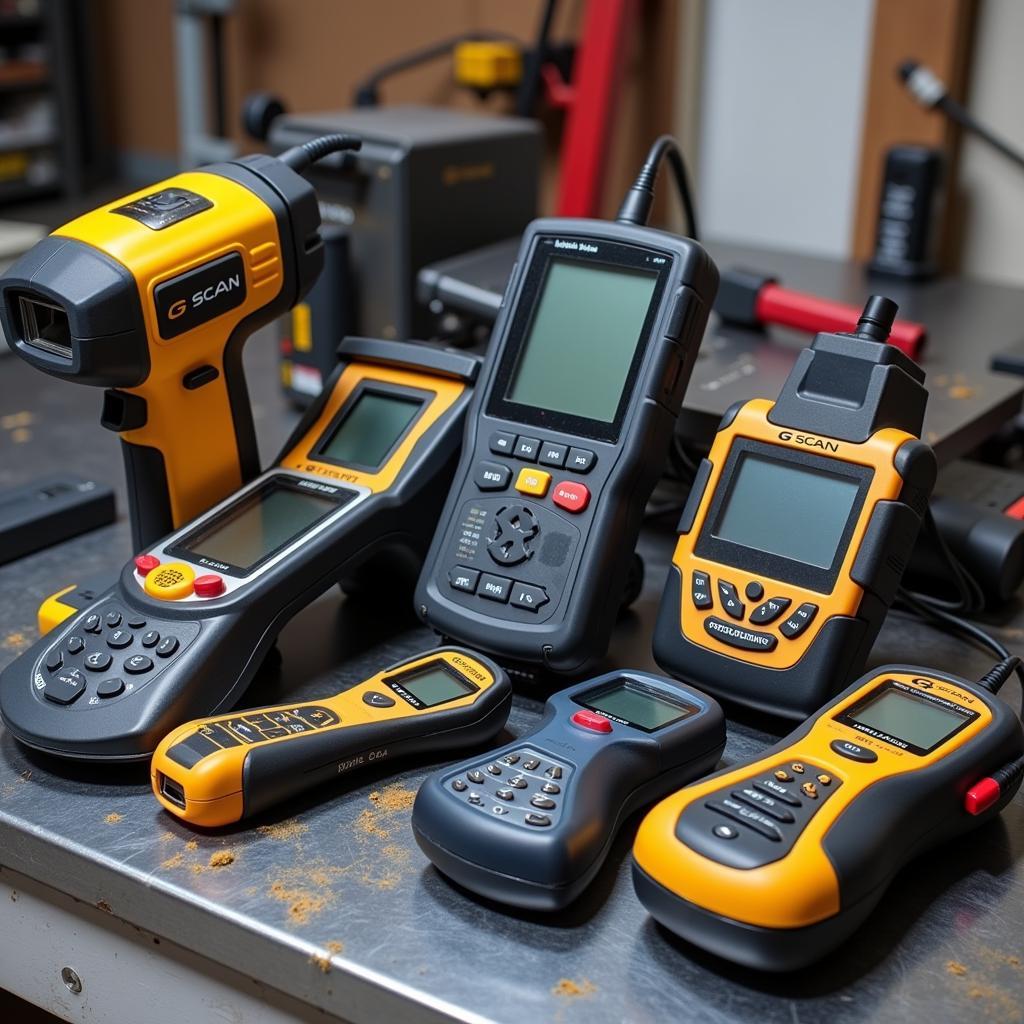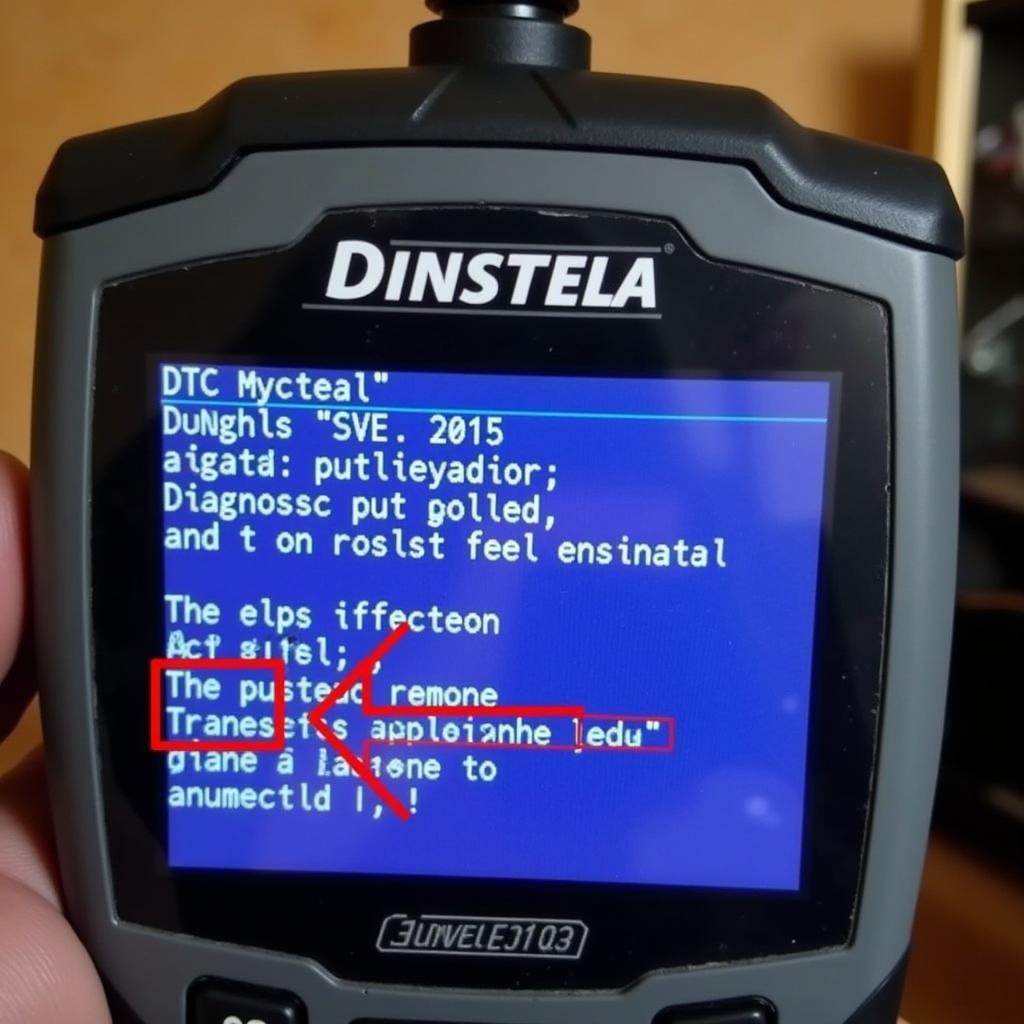3d Surface Scan Tools are rapidly changing the automotive repair landscape, offering unprecedented accuracy and efficiency for a variety of tasks. From collision repair to custom fabrication, these tools are proving to be invaluable for automotive professionals who demand precision and speed. But how exactly do these tools work and what are the benefits of incorporating them into your workflow?
How 3D Surface Scan Tools Work
A 3D surface scan tool works by projecting a pattern of light (structured light scanning) or a laser beam (laser scanning) onto the surface of an object. The tool then analyzes the way the light is reflected back to create a highly accurate 3D model of the object. This data can then be used for a variety of purposes, including:
- Accurate Measurements: Measure distances, angles, and surface areas with millimeter precision.
- Reverse Engineering: Create digital models of existing parts for replication or modification.
- Quality Control: Compare scanned data to original design files to identify discrepancies or defects.
- Alignment and Fitting: Ensure perfect alignment of parts during assembly or repair.
[image-1|3d-surface-scan-in-action|3D surface scan tool being used to scan a car part|A close-up image of a 3D surface scan tool in action. The tool is projecting a grid of light onto the surface of a car part, while a camera captures the reflected light to create a 3D model. The image highlights the precision and detail captured by the scanning process.]
Benefits of Using 3D Surface Scanners in Automotive Repair
The adoption of 3D surface scan tools offers numerous advantages for automotive professionals:
- Increased Accuracy: Reduces the risk of human error and ensures precise measurements for improved repair quality.
- Enhanced Efficiency: Significantly reduces the time required for measurement and alignment tasks, boosting productivity.
- Improved Documentation: Creates detailed digital records of vehicle condition, facilitating accurate estimates and repairs.
- Reduced Rework: Minimizes the need for costly and time-consuming rework due to inaccurate measurements.
- Enhanced Customer Satisfaction: Results in faster turnaround times and higher-quality repairs, leading to increased customer satisfaction.
Applications of 3D Surface Scan Tools
3D surface scan tools have a wide range of applications in automotive repair, including:
- Collision Repair: Assess damage severity, create accurate frame straightening plans, and verify repairs.
- Wheel Alignment: Measure suspension geometry with high precision for accurate wheel alignments.
- Bodywork and Panel Alignment: Ensure perfect fitment of panels, doors, and other body components.
- Custom Fabrication: Create digital models of parts for custom fabrication or modifications.
- Restoration: Capture accurate measurements of classic cars for restoration or part replication.
[image-2|3d-scan-data-on-computer|3D scan data displayed on a computer screen in an automotive repair shop|A computer screen displaying the 3D scan data of a car part in an automotive repair shop. The image shows the detailed digital model generated by the scan, allowing for precise measurements and analysis.]
Choosing the Right 3D Surface Scan Tool
Selecting the appropriate 3D surface scan tool depends on your specific needs and budget. Factors to consider include:
- Accuracy: Different tools offer varying levels of accuracy, so choose one that meets the demands of your applications.
- Portability: Consider the size and weight of the tool, especially if it will be used in different locations.
- Software Compatibility: Ensure the tool’s software is compatible with your existing systems and workflows.
- Ease of Use: Choose a tool with an intuitive interface and user-friendly software for seamless integration.
- Cost: Prices for 3D surface scan tools can vary significantly, so determine your budget and explore options accordingly.
“When choosing a 3D scanner, it’s crucial to assess your specific needs, budget, and the level of accuracy required for your applications,” says John Miller, Senior Automotive Engineer at ScanToolUS. “Investing in the right tool can significantly enhance your repair capabilities and overall efficiency.”
The Future of Automotive Repair
3D surface scan tools are no longer just a futuristic concept but a vital tool for modern automotive repair professionals. As technology continues to advance, we can expect even more sophisticated and affordable 3D scanning solutions to emerge, further transforming the industry and empowering technicians with greater precision and efficiency than ever before.
[image-3|mechanic-using-3d-scanner-on-car|A mechanic using a 3D scanner on a car in a repair shop|A mechanic in a professional automotive repair shop is using a handheld 3D scanner to scan a damaged part of a car. The image showcases the integration of advanced technology into everyday repair processes.]
Contact ScanToolUS today at +1 (641) 206-8880 or visit our office at 1615 S Laramie Ave, Cicero, IL 60804, USA, to learn more about how 3D surface scan tools can revolutionize your automotive repair process.
FAQ
1. What is the typical cost of a 3D surface scan tool?
The cost can range from a few thousand dollars for entry-level models to tens of thousands for professional-grade systems.
2. How long does it take to scan a vehicle with a 3D surface scan tool?
Scan times vary depending on the size and complexity of the area being scanned but can be completed significantly faster than traditional methods.
3. Do I need special training to use a 3D surface scan tool?
While some technical expertise is beneficial, most manufacturers provide training and support to help users familiarize themselves with the tool and software.
4. Can 3D surface scan tools be used on all types of vehicles?
Yes, these tools can be used on a wide range of vehicles, including cars, trucks, motorcycles, and even boats.
5. Are there any safety concerns when using 3D surface scan tools?
As with any equipment, it’s essential to follow the manufacturer’s safety guidelines and use appropriate personal protective equipment when operating the tool.


